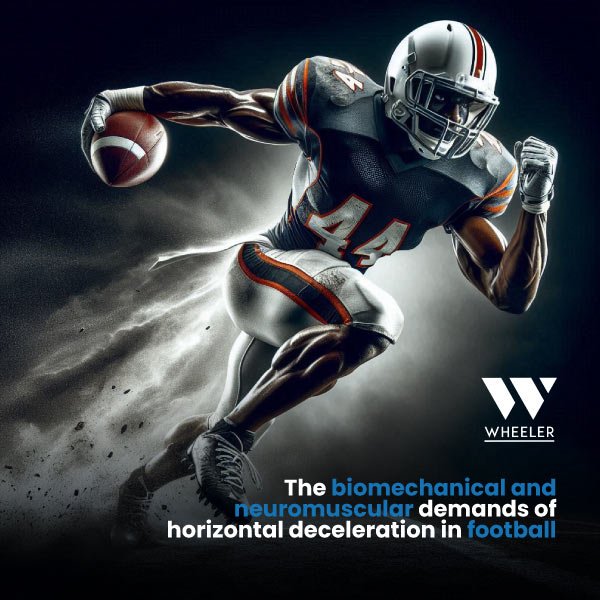The biomechanical and neuromuscular demands of horizontal deceleration in football
Introduction
Football is a game of acceleration, yes, but also of deceleration. The ability to stop quickly, control momentum, and change direction efficiently is what separates average players from elite performers. Yet, deceleration is often overlooked in training programs, even though it plays a key role in movements like the drop jump. In this article, we’ll explore the mechanical load, neuromuscular requirements, and injury risks associated with deceleration in multidirectional sports like football.
What is horizontal deceleration?
It refers to an athlete’s ability to reduce forward momentum in a short time and distance. It’s essential for:
- Change of direction (COD)
- Defensive transitions
- Agility and reactivity
- Injury prevention
Despite its importance, deceleration receives far less attention than sprinting or jumping.
The unique load profile of deceleration
Compared to acceleration, horizontal deceleration imposes greater mechanical stress:
- Ground reaction forces (GRF) during braking can reach 2.7x greater than during initial acceleration steps.
- The braking phase happens fast—typically within <50 milliseconds of ground contact.
- Anterior foot placement during deceleration creates high impact peaks, especially when heel striking.
These high loads demand strong eccentric capacity, especially in the hamstrings, glutes, and quadriceps.
Neuromuscular challenges of braking
Deceleration is not just physical—it’s a neuromuscular skill. It requires:
- Rapid motor control
- Timing of force application
- Symmetry between limbs
- High levels of reactive strength
Athletes must coordinate multiple muscle groups to absorb force effectively while preparing to reaccelerate or change direction.
Risk factors during deceleration
Because of the high braking forces, deceleration is associated with:
- Hamstring strains
- ACL injuries, especially during final braking steps before cutting
- Tendinopathies, due to chronic overload
- Asymmetries in limb use, leading to compensations
In fact, deceleration is one of the top movement patterns linked to non-contact ACL injuries in team sports.
Performance implications
Elite football players often perform more high-intensity decelerations than accelerations during matches.
- In some cases, up to 80–100% more braking actions
- Strong deceleration ability allows players to create and close space, essential for attacking and defending
Training this skill can enhance:
- COD speed and precision
- Agility under pressure
- Injury resilience
How to train deceleration
- Strength foundation
- Emphasize eccentric strength (hamstring curls, split squats, flywheel work)
- Technical drills
- Teach landing mechanics: knees over toes, chest forward
- Use stop-and-stick drills, deceleration into COD, and controlled backpedals
- Reactive training
- Include unpredictable CODs
- Use visual or verbal cues to trigger braking
- Plyometric variants
- Depth drops
- Reverse bounds
- Horizontal hops with sudden stops
- Monitor load
- Excessive high-intensity deceleration without recovery can lead to overuse
Testing deceleration ability
You can use:
- Split time analysis: acceleration vs. deceleration zones
- Force plate deceleration landings
- Video analysis of COD and stopping patterns
- Asymmetry tracking: to identify compensations
Final thoughts
Deceleration is more than just stopping—it’s a performance skill and a protective mechanism. Training it deliberately through targeted methods like eccentric training can help players absorb force, move efficiently, and reduce injury risk. Strengthening this underrated skill is key to elevating football performance in real-game situations. In our next article, we’ll explore how the rate of force development influences power training and how concentric and eccentric loading affect velocity-based performance.
Author


